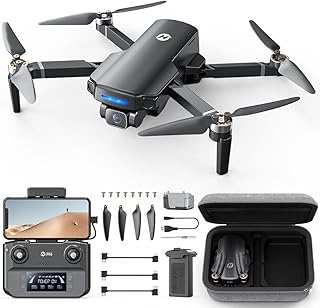The Economic Impact of Drones: Opportunities and Challenges
Drones, or unmanned aerial vehicles (UAVs), are rapidly transforming various industries and aspects of life, bringing with them a wave of economic opportunities and challenges.
Opportunities:
* Job Creation: The drone industry is booming, creating jobs in manufacturing, software development, data analysis, pilot training, and drone maintenance.
* Increased Efficiency and Productivity: Drones are streamlining operations in industries such as agriculture, construction, infrastructure inspection, and delivery, leading to faster and more efficient workflows.
* Cost Reduction: Automation through drones can significantly reduce operational costs by minimizing manpower requirements and eliminating the need for risky and expensive human interventions.
* Improved Safety: Drones can perform dangerous tasks in hazardous environments, reducing the risks to human workers.
* Enhanced Data Collection and Analysis: Drones can collect high-resolution images and data, providing valuable insights for various sectors like urban planning, environmental monitoring, and disaster relief.
* New Business Models: Drones are opening doors to new business models, like drone-based delivery services, aerial photography, and precision agriculture.
Challenges:
* Regulations and Safety Concerns: Drone usage raises concerns about privacy, security, and potential misuse. Regulations are still evolving, creating uncertainty and hindering widespread adoption.
* Infrastructure and Technology Limitations: Drone technology and infrastructure, including battery life, range, and airspace management, still face limitations.
* Public Acceptance and Perception: Public concerns regarding drone noise, privacy violations, and potential accidents need to be addressed to foster wider acceptance.
* Economic Displacement: While drones create jobs, they also threaten to displace workers in traditional sectors like trucking and photography.
* Cybersecurity Risks: Drones are vulnerable to hacking and manipulation, posing security risks to sensitive information and infrastructure.
* Environmental Impacts: Drones' energy consumption and potential for accidents raise environmental concerns, requiring sustainable solutions and responsible use.
Moving Forward:
* Collaboration and Innovation: Collaboration between government agencies, industry leaders, and researchers is crucial to address regulatory challenges, develop safety standards, and promote responsible drone technology.
* Public Awareness and Education: Building public trust in drone technology requires transparent communication, public education, and addressing concerns through ethical guidelines and responsible usage.
* Focus on Sustainability: Integrating environmental considerations into drone development and operation is essential to ensure long-term sustainability.
The economic impact of drones will continue to unfold in the coming years. Addressing the challenges and harnessing the opportunities will require a collaborative and forward-looking approach. By embracing innovation while prioritizing safety and responsibility, the drone revolution can contribute to a more efficient, sustainable, and prosperous future.


